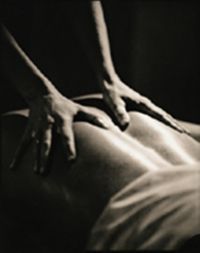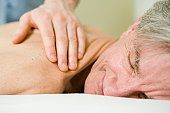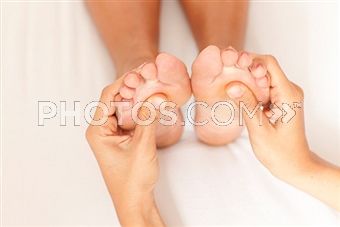Services
- » Swedish Massage
- » Deep Tissue Massage
- » Trigger Point Therapy
- » Sports Massage
- » Movement Education
- » Geriatric Massage
- » Integrative Reflexology
Swedish Massage
Swedish massage is a very relaxing and therapeutic style of bodywork. Pressure can range from gentle to firm. It combines oils or lotion with an array of strokes such as gliding, rolling, kneading, compression, and percussion. The benefits of this type of bodywork are wide-ranging and include relief from aches and pains, improved circulation, decreased stress levels in the body, enhanced mental clarity, improved appearance, and greater flexibility. If this is your first massage ever, I usually recommend a 60-minute Swedish massage. Your body will appreciate this introduction to touch therapies and understanding your areas of tension can help guide you on your path to wellness.
Deep Tissue Massage

Deep tissue massage is a form of bodywork that aims to relieve tension in the deeper layers of tissue in the body. Deep tissue massage is a highly effective method for releasing chronic stress areas due to misalignment, repetitive motions, and past lingering injuries. Due to the nature of the deep tissue work, open communication during the session is crucial to make sure the therapist works within your therapeutic comfort zone. Keep in mind that soreness may occur after the treatment.
Trigger Point Therapy
Trigger point therapy is a style of bodywork that focuses on stimulating and releasing "trigger points" in your body. Trigger points are areas of tension that occur in the belly of a muscle rather than along the energy pathways of the body (think acupuncture or acupressure points). These trigger point "knots" can build up throughout a person's life due to physical, mental, and/or emotional stress. During a session, focused pressure along with a small movement is applied to help release your trigger points. This process may feel uncomfortable at times (but pain should never be greater than 8 out of 10), yet the effects can be lasting and profoundly transformative. Many clients are eager to learn self-care of their trigger points so they can continue to enjoy their physical activities.
Sports Massage
Sports massage is a type of massage designed for highly active people and those who engage in athletics. Engaging in sports is harsh on the body and can often lead to injuries in both the short and long term. Sports massage enhances performance and prolongs a sports career by helping to prevent injury, reduce pains and swelling in the body, relax the mind, increase flexibility, and dramatically improve recovery rates. Sports massage is also highly effective in aiding the rapid recovery of an athlete from an injury. Greater kinesthetic awareness is encouraged through the use of active range of motion (ROM), passive ROM, and active-assisted ROM.
Movement Education
Movement education uses a custom-tailored approach to improve your body awareness and movement skills. Proper posture and self-care techniques are explored so you are able to ergonomically adapt to your activities-of-daily-living environments. Combining problem-solving, guided-discovery, and exploratory methods, this practice inevitably leads to a stronger connection between the mind and body, creating a more natural and graceful experience of movement and interaction with other people.
Geriatric Massage

Geriatric massage is a form of massage designed to meet the specific needs of the elderly. It helps to improve blood circulation, relieve pain, and also increase range of motion. This gentle massage can help you maintain and improve your overall health, as well as regain certain physical functions that have been reduced due to aging. In addition, since the elderly do not typically receive enough physical touch, this massage may help alleviate symptoms of loneliness or depression.
Integrative Reflexology

Unless paired with a massage session, you will remain clothed except the feet and ankles. Claire Marie Miller says, “Bring the feet to life and the body will follow.” Reflexology is based on the premise that there are reflexes in our hands, feet, and ears that relate to every organ and part of our body. By stimulating these reflexes with pressure, manipulation, and gentle circular strokes, nerve function and blood supply may be improved, which may alleviate stress and health issues. Claire Marie Miller’s 30+ years of reflexology study has resulted in Integrative Reflexology, based on four theories -- structural alignment theory, zone therapy (based on Eunice Ingham), meridian theory, and proprioceptor theory. For more information, see her website at http://www.clairemariemiller.com/integrative-reflexology.